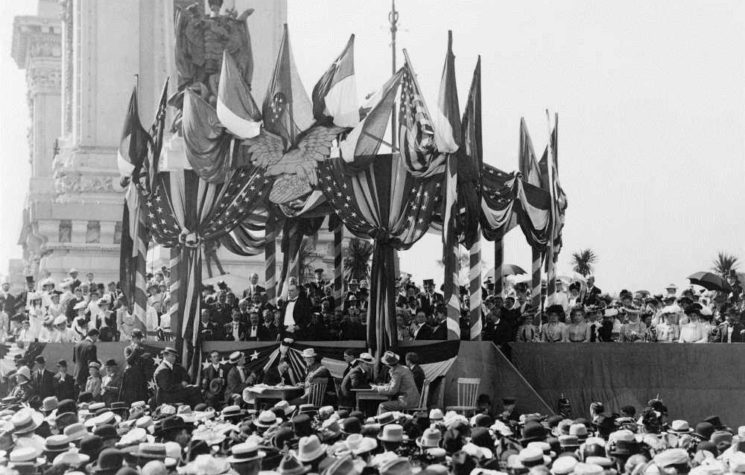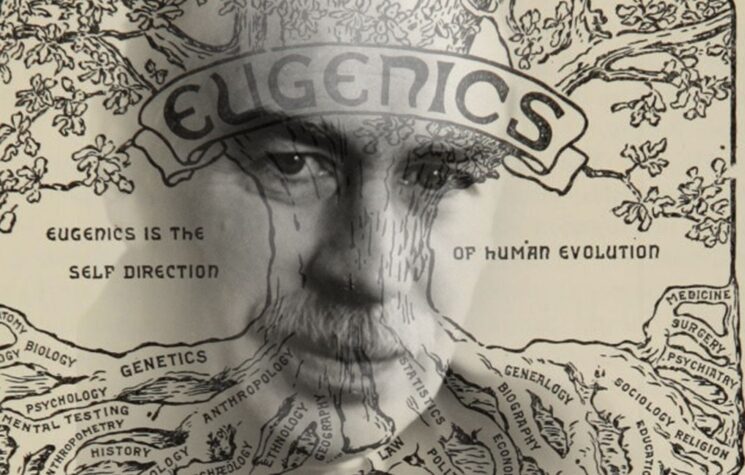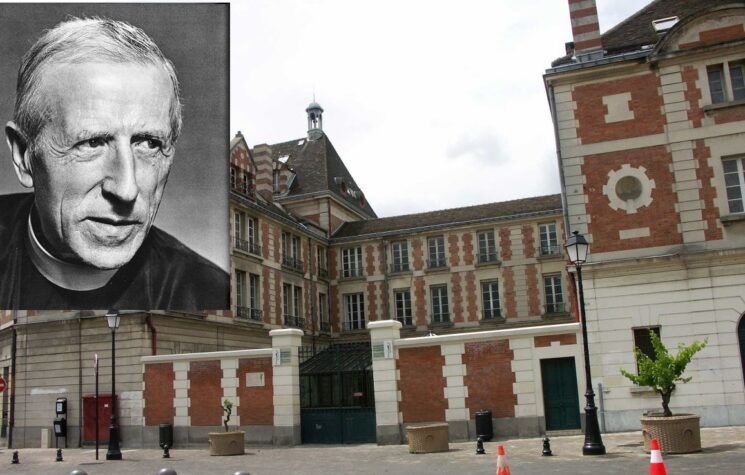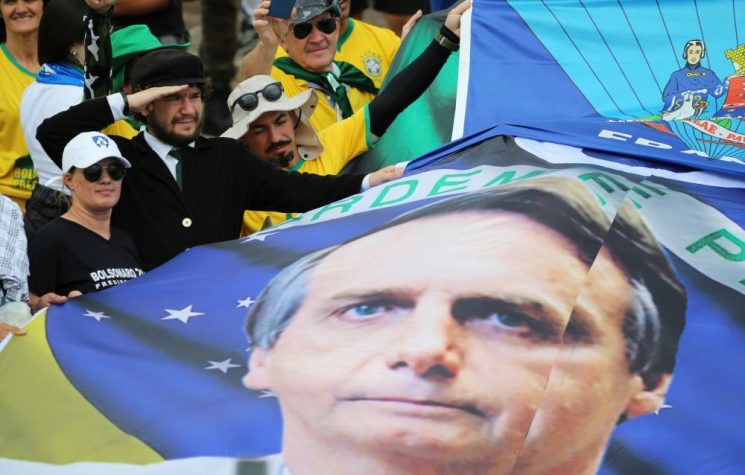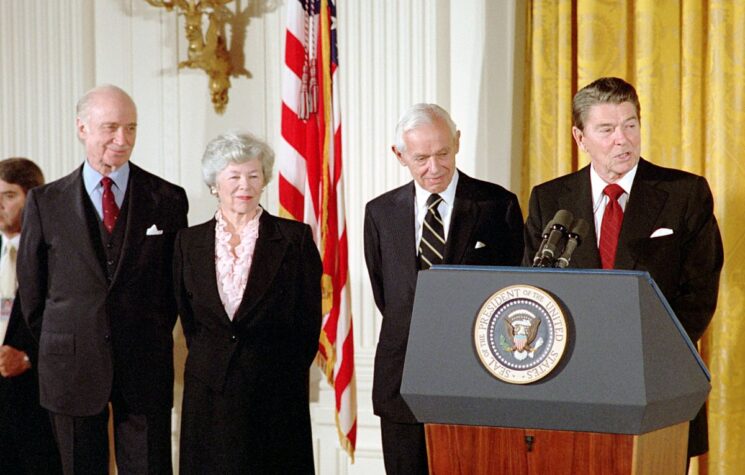Matt Ehret explains what caused the rise of the perversion of science known as “eugenics” as a new scientific religion in the 19th century.
Today’s world is gripped between two possible futures: on the one hand, a multipolar alliance in defense of sovereign nation states has organized itself around a paradigm of long-term thinking, scientific optimism and win-win cooperation, while a unipolar paradigm of world government, depopulation and zero-sum thinking pushes a program of Great Resets, controlled pandemics and war.
Gaining insight into these two opposing paradigms is more important now than ever before, and one important place to start is the disturbing mind of Great Reset Architects who are today pushing society into a “Fourth Industrial Revolution” where it is believed that automation, and Artificial Intelligence will render most of humanity obsolete. As the World Economic Forum’s star philosopher Yuval Harari has repeatedly described this outlook: “Technology may disrupt human society and the very meaning of human life in numerous ways ranging from the creation of a global useless class to the rise of data colonialism and digital dictatorships”.
In the first article in this series, I reviewed the re-organization of the eugenics movement after WW2 as it followed Sir Julian Huxley’s demand that “the unthinkable be made, once again thinkable”.
In this second segment, we will leap back a little further in time to better understand what caused the rise of the perversion of science known as “eugenics” as a new scientific religion in the 19th century, before continuing with part three (From Russell to Wiener: The Rise of Cybernetics and Transhumanism).
The Closed System Assumptions of Social Darwinism
There are a few fundamental things that should be understood about the science of eugenics, otherwise known as “the science of cleansing the human gene pool of undesirable pollution” which emerged at the end of the 19th century.
This “science” grew out of the application of Darwin’s theories of natural selection and “survival of the fittest” to human society’s weeding out of the unfit and was premised on certain fundamental assumptions, not the least of which included: 1) that humanity is a system entirely shaped by material forces of environmental constraints and genetics, 2) that this system was fundamentally closed and hence entropic (subject to immutable laws of diminishing returns guided by an inevitable heat death), 3) that the creative force of genetic mutations guiding the appearance of new biological mechanisms was fundamentally random and 4) that this randomness could only be overcome by the rise of a new era of social engineers managing humanity on all levels-economic, psychological, cultural and even genetic.
Imagining the future age when the science of eugenics would replace world religions, the school’s founder Sir Francis Galton (cousin to Charles Darwin) mused in 1905: “It is easy to let the imagination run wild on the supposition of a whole-hearted acceptance of eugenics as a national religion”.
The Late 19th Century: A Clash of Two Systems
The paradigm shifting breakthroughs made in science and statecraft by the end of the 19th century resulted in a new petro-chemical/electronic age. New discoveries in atomic physics made by Beckerel, Roentgen, Curie, Rutherford, Planck and Einstein were additionally changing humanity’s idea of space, time, energy and matter. The practical application of these discoveries in the form of scientific and technological progress at the service of humanity was quickly destroying the foundations of Thomas Malthus’s supposed “laws of population” which assumed that human invention could never outpace nature’s limits always requiring a “scientific priesthood” to control population growth from above the control of nations.
Despite the fact that a genuine hope for a new age of discovery and progress was becoming realized, something darker was at play.
It was at this time that leading forces representing the British Empire were busy trying to resolve an existential challenge: National Sovereignty had proven itself much stronger than anticipated by the financier oligarchy centered in London and something new was emerging that could possibly undermine systems of Hobbesian “zero-sum” geopolitics forever.
The preservation of the union largely thanks to a strategic Russia-U.S. alliance resulted in a major defeat for British forces both in the City of London as well as Wall Street, the slaveocracy of the South and British Canada. A new global system was quickly emerging as Lincoln-admiring statesmen quickly adopted the “American System of Political Economy” to liberate their nations from the manipulation of the Empire. Where the American System was a fundamentally open system- premised as it was upon unbounded technological progress and the subservience of money to national sovereignty, the British system was fundamentally closed, premised on the worship and control of money by private financiers, debt slavery and speculation. Where one focused on production, the other only parasitically looted.

Henry C Carey (leading economic advisor to Abraham Lincoln) had made this dichotomy explicit as he foresaw the global nature of the oncoming U.S. Civil War elaborated in his 1852 Harmony of Interests:
“Two systems are before the world; the one looks to increasing the proportion of persons and of capital engaged in trade and transportation, and therefore to diminishing the proportion engaged in producing commodities with which to trade, with necessarily diminished return to the labor of all; while the other looks to increasing the proportion engaged in the work of production, and diminishing that engaged in trade and transportation, with increased return to all, giving to the laborer good wages, and to the owner of capital good profits… One looks to pauperism, ignorance, depopulation, and barbarism; the other in increasing wealth, comfort, intelligence, combination of action, and civilization. One looks towards universal war; the other towards universal peace. One is the English system; the other we may be proud to call the American system, for it is the only one ever devised the tendency of which was that of elevating while equalizing the condition of man throughout the world.”
In 1872, Carey was busy directing an international array of economists around the globe who were assisting dozens of governments in the implementation of this system when he wrote an anti-Malthusian economic treatise called Unity of Law. It was here that the great economist fully laid out his comprehensive theory of economic science as a non-zero sum system of cooperation and creative growth among great cultures:
“The great nations of the earth should each and all profit by development of the powers, mental, and physical, of each and every other; each and all growing in power for self-direction as each and every other more and more obtains power for controlling and directing the great natural forces; the harmony of all international interests being as perfect and complete as we know to be that of the individuals of which nations are composed.”
By 1890, Carey’s optimistic vision of a new epoch for civilization was beautifully expressed by Colorado’s first Governor, and Lincoln’s former bodyguard William Gilpin whose 1890 Cosmopolitan Railway featured in-depth studies of rail projects uniting all parts of the world together under a new culture of scientific and technological progress for all. Gilpin was explicit that this system would be funded by national banks generating long term productive credit, protectionism and universal education for the good of each and all.

Gilpin wrote of this future post-colonial world:
“The weapons of mutual slaughter are hurled away; the sanguinary passions find a check, a majority of the human family is found to accept the essential teachings of Christianity IN PRACTICE… Room is discovered for industrial virtue and industrial power. The civilized masses of the world meet; they are mutually enlightened, and fraternize to reconstitute human relations in harmony with nature and with God. The world ceases to be a military camp, incubated only by the military principles of arbitrary force and abject submission. A new and grand order in human affairs inaugurates itself out of these immense concurrent discoveries and events”
The Empire Strikes Back
Empires never disappear without a fight, and the British Empire was no exception. Before the British-orchestrated Civil War in the USA was finished, a new imperial grand strategy was reformulated in the ideological nerve center of Cambridge and the Royal Society.
Out of these networks came a new breed of imperial management under the form of Huxley’s X Club (c.1865) led by a young talented misanthrope named Thomas Huxley (aka: ‘Darwin’s Bull Dog”) who was tasked with formulating a new grand strategy for the preservation of the empire.
Knowing that the most important level of warfare is found in the scientific conceptions held by society (since our standard for political self-regulation is ultimately founded upon and informed by standards and laws found in nature), Huxley’s X Club aimed at uniting all major branches of physics, biology, economics and sociology under a singular coherent interpretation based on gradualist, descriptive, reductionist science. This would be a new unified, internally consistent science that would iron out the evidence of all creative leaps which shape all of living and non-living nature. This group realized that if nature could be modelled as a closed, decaying and random process then it would also be devoid of any actual notion of principle, justice, or morality. This would be a conception of nature which empires could forever justify the exploitation of their victims.

Although Malthus’s theories (and their economic corollaries in the works of Mill, Smith and Ricardo) had formerly done the job of “scientifically justifying” the empire, something more sophisticated was needed as the world was quickly seeing through the fraud as Carey demonstrated in his widely read “Unity of Law” (1872):
“Mr. Malthus was led to invent a law of population by means of which to relieve the rich and powerful from all responsibility for the existing state of things; giving them assurance that the poverty and wretchedness by which they were everywhere surrounded had resulted from the fact that the Creator had sent upon the earth large numbers of people for whom He had provided no table at which they might be allowed to eat, no materials by aid of which they might be clothed; thus furnishing the theory by aid of which subsequent writers have been enabled, as they supposed, to prove that, in the British Islands, man had become ‘a drug’ and ‘population a nuisance’.”
To put the new imperial grand strategy into motion, two new think tanks were soon brought online.
The first of the two was called the Fabian Society created in 1884 by a nest of eugenics-loving intellectuals led by Sidney and Beatrice Webb alongside “slaughter useless eaters” George Bernard Shaw. Soon the group attracted leading imperial luminaries to its fold including Thomas Huxley’s student H.G. Wells, Lord Halford Mackinder, John Maynard Keynes and Lord Bertrand Russell. The group soon established a school from which to indoctrinate talented young members of the global elite named the London School of Economics.
In 1902, a second think tank called the Round Table Group was established in Oxford under the control of “race patriots” George Parkin and Lord Alfred Milner. Soon branches of “Roundtables” across all Anglo-Saxon Commonwealth were created as outlined by Professor Carrol Quigley’s post-humously published Anglo-American Establishment. The funding for this group was paid for by the fortunes of racist diamond magnate Cecil Rhodes and its mandate was illustrated in Rhodes’ 1877 will:
“Let us form the same kind of society, a Church for the extension of the British Empire. A society which should have its members in every part of the British Empire working with one object and one idea we should have its members placed at our universities and our schools and should watch the English youth passing through their hands just one perhaps in every thousand would have the mind and feelings for such an object, he should be tried in every way, he should be tested whether he is endurant, possessed of eloquence, disregardful of the petty details of life, and if found to be such, then elected and bound by oath to serve for the rest of his life in his Country. He should then be supported if without means by the Society and sent to that part of the Empire where it was felt he was needed.”
The Rhodes Trust set up shop in Oxford where young talent from across the commonwealth were soon brainwashed under Rhodes Scholarships becoming a new generation of imperial high priests guided by Rhodes’ edict that a new Church of the British Empire be established. These think tanks would coordinate British policy with a two-fold aim: 1) the destruction of all creative open system thought in political economy and science 2) the subjugation of the race to a new global feudal order managed by a master class.
In his manifesto entitled Imperial Federation (1892), the man who would become the co-founder and director of the Rhodes Trust (George Parkin), wrote of the inevitable collapse of the empire, unless the “disintegrating forces” of sovereign nation states could be destroyed:
“Has our capacity for political organization reached its utmost limit? For the British people this is the question of questions. In the whole range of possible political variations in the future there is no issue of such far reaching significance, not merely for our own people but for the world at large, as the question whether the British Empire shall remain a political unit… or yielding to disintegrating forces, shall allow the stream of the national life to be parted into many separate channels.”
These new think tanks wasted no time in putting a new grand strategy into action.
One of the primary forces who would guide the application of the anti-creative science of empire was Fabian Society leader and Cambridge Apostle, Lord Bertrand Russell and his cohort David Hilbert who launched a new project in 1900 that would attempt to shackle the entire universe into a very small mathematical box devoid of all creative vitality. This box would soon take on the name “cybernetics” and “information systems theory” by disciples of Russell and Hilbert. This system would later serve as the foundation for the growth of Transhumanism, Artificial Intelligence and the Fourth Industrial Revolution.










